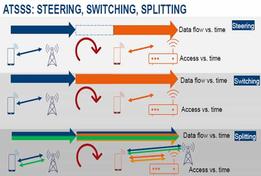
ASK Modulation: Advantages and Disadvantages
Explore the pros and cons of Amplitude Shift Keying (ASK) modulation, including bandwidth efficiency, noise susceptibility, and application suitability.
Showing 25 posts (Page 18 of 139)
Advertisement

Explore the pros and cons of Amplitude Shift Keying (ASK) modulation, including bandwidth efficiency, noise susceptibility, and application suitability.

Explore the differences between astable, monostable, and bistable multivibrators, including their characteristics, circuits, and applications.

Explore the advantages and disadvantages of Asynchronous Transfer Mode (ATM) technology, including its traffic support, overhead, and cost implications.
Explore the distinctions between asynchronous protocols, using start/stop bits, and synchronous protocols, employing SYN characters, with examples like Xmodem and Bisync.

Explore the fundamental differences between asynchronous and synchronous communication methods, including speed, reliability, and applications.
Explore the fundamental differences between asynchronous and synchronous counters, focusing on clocking, speed, count sequence, and decoding errors.

Explore the differences between AT cut and SC cut quartz crystals, including temperature stability, cost, and applications like OCXOs.
Understand the basics of the Automatic Time Offset Control (ATC) algorithm, including time offset estimation and correction in wireless systems. Learn about coarse and fine estimation methods.

Explore the pros and cons of Advanced Time Division Multiple Access (ATDMA) in DOCSIS networks, including spectrum efficiency and noise susceptibility.

Explore the differences between ATDMA and SCDMA, two resource-sharing techniques used in the DOCSIS standard for cable modem communication.

Explore the different ATM Adaptation Layers (AALs): AAL1, AAL2, AAL3/4, and AAL5. Understand their characteristics, sublayers (CS & SAR), and suitability for various ATM service classes.

Explore the differences between ATM service categories like CBR, VBR, ABR, UBR, and GFR. Learn how each handles data traffic for optimal network performance.

Explore the key differences between ATM and STM, including multiplexing techniques, bandwidth allocation, overhead, and suitability for bursty traffic.

Explore the differences between Asynchronous Transfer Mode (ATM) and Time Division Multiplexing (TDM) in this comprehensive comparison.
A comparison of ATM (Asynchronous Transfer Mode) and Frame Relay networks, covering their application, data handling, QoS support, and more.

Explore ATSSS (Access Traffic Steering, Switching & Splitting) in 5G : features, advantages and disadvantages.

Explore the pros and cons of pure tone and speech audiometers. Learn about audiograms, audiometry, and the different types of hearing tests used to diagnose hearing loss.

Explore the fundamentals of Augmented Reality (AR), key components, and various types of AR systems, including marker-based, location-based, and projection-based AR.

Explore 5 key advantages and disadvantages of Augmented Reality (AR), covering its benefits such as interactive nature, medical advancements and drawbacks like privacy concerns, developmental costs etc.

Explore the differences between auto zero and chopper stabilized amplifiers, focusing on offset correction, noise, power consumption, and applications.
Explore how autoencoders revolutionize 6G through end to end learning, signal optimization, intelligent communication system design with the help of AI/ML and deep learning.

Learn about Automatic Call Distributors (ACDs): how they efficiently manage communications, route calls, and enhance customer service through automation and skill-based routing.

Learn the basics of Automatic Gain Control (AGC), an algorithm that monitors the received signal and automatically controls the gain in a receiver, especially in mobile devices.

Explore Automatic Speech Recognition (ASR) systems: how they work, their benefits like cost reduction and accessibility, and the protocols they use for converting spoken language into text.

Discover A2B (Automotive Audio Bus) protocol basic features and explore advantages and disadvantages of A2B Protocol.
Advertisement